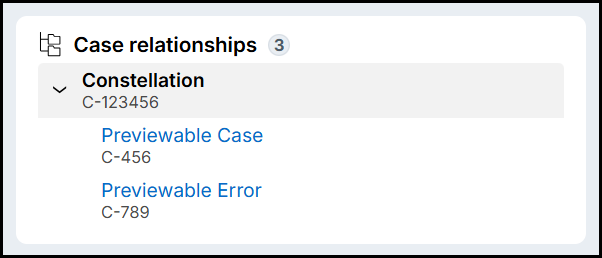Dragon Naturally Speaking is a speech recognition software that enables users to dictate text and perform mouse and keyboard-based commands on their desktop. Users can directly interact with actionable and editable elements on web pages by referencing them the element's label (name) or type, such as buttons or links.
In Pega platform, one area where users may encounter some discrepancies in expected behavior is the Case Relationships widget. This widget is located in the Utilities panel of a work object case view and displays relationships to related parent or child cases. It is structured as a tree, with each case represented as a tree item.

At the parent level of the tree, users can expand or collapse the structure by clicking the caret icon using the mouse, or using the right or left arrow keys when the keyboard focus is on the tree item. However, Dragon users may find that they are unable to activate this functionality using the "click" voice command that simulates a left click or Enter keypress. This limitation arises from how Dragon interprets tree structures that rely on native keyboard functionality for expand and collapse actions, rather than discrete button elements. As a result, Dragon does not recognize the caret icon as an actionable element.
This behavior is not unique to Pega and can also be observed in other environments, such as the ARIA Authoring Practice Guide’s example pages for tree view and tree view navigation. Marking up the caret icon a button may appear as a straightforward solution, but treeitems themselves can be actionable elements such as a link. Nesting interactive elements within each other would introduce further accessibility concerns and issues with assistive technologies.
Despite this limitation, Dragon users can still interact with the tree structure by using keypress commands. By navigating to the desired tree item using Tab commands, users can then speak arow keypress commands, allowing them to expand or collapse items within the tree.
